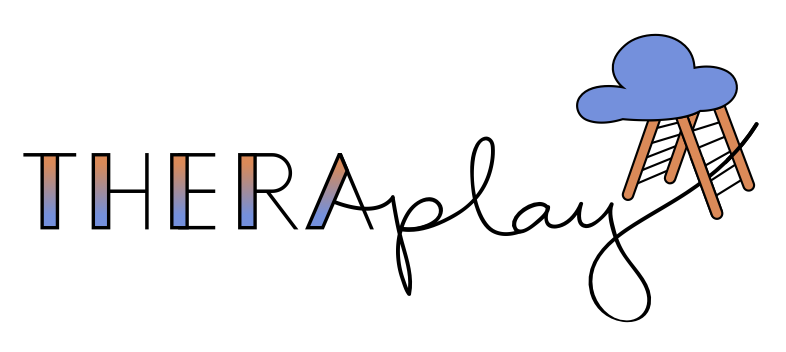Everything You Need to Know About the Rooting Reflex
If your child struggles with feeding challenges, speech delays, thumb-sucking, or oral sensitivities, they may have an unintegrated Rooting Reflex. The Rooting Reflex is one of the many primitive reflexes that help newborns survive and develop. However, if it doesn’t integrate properly, it can lead to oral motor, speech, and feeding difficulties later in life.
TL;DR: The Rooting Reflex helps newborns with feeding and oral development, but if it remains unintegrated past 6 months of age, it can lead to speech delays, feeding difficulties, and oral sensitivities. Primitive reflex integration therapy can improve chewing, swallowing, and speech skills, helping children feel more comfortable with oral motor tasks.
In this post, we’ll cover:
What the Rooting Reflex is
How the Rooting Reflex helps babies with feeding and development
At what age the Rooting Reflex should be integrated
Signs of an unintegrated Rooting Reflex
How primitive reflex integration therapy can help address a retained Rooting Reflex
What Is the Rooting Reflex?
The Rooting Reflex is an involuntary movement that helps babies find food and begin feeding. When something touches the corner of a baby’s mouth, they will:
Turn their head toward the touch
Open their mouth
Thrust their tongue forward to prepare for sucking
This reflex is strongest at birth, especially in the first few hours after delivery, and is essential for breastfeeding and bottle feeding.
The Rooting Reflex works closely with the Suck Reflex, which helps babies:
👄 Coordinate breathing, sucking, and swallowing
🍼 Latch onto the breast or bottle to feed properly
If the Rooting Reflex does not fully integrate, children may experience feeding, speech, and oral motor challenges.
When Should the Rooting Reflex Go Away?
The Rooting Reflex develops in the womb at around 28 weeks gestation and should integrate by 6 months of age as babies begin to:
Eat solid foods
Develop more control over their mouth movements
Explore objects with their hands instead of their mouth
The Suck Reflex appears around 30 weeks gestation and should integrate between 3 to 6 months as the baby transitions to more mature swallowing patterns.
If these reflexes do not integrate properly, a child may struggle with chewing, swallowing, speaking, and oral sensitivities and fixations or habits (i.e. licking or mouthing objects).
Symptoms of an Unintegrated Rooting Reflex in Children
A retained Rooting Reflex can make feeding and speech development more difficult. Signs of an unintegrated Rooting Reflex include:
🚩 Thumb-sucking or excessive mouthing of objects beyond infancy
🚩 Hypersensitivity around the mouth and lips – Difficulty tolerating textures or toothbrushing
🚩 Drooling past infancy – Trouble managing and swallowing saliva
🚩 Feeding challenges – Struggles with solid foods, difficulty chewing and swallowing
🚩 Tongue resting too far forward – May interfere with proper speech and chewing
🚩 Speech delays or articulation challenges – Difficulty pronouncing certain sounds
🚩 Tongue tie – A tongue that doesn’t move properly for feeding and speaking
Children with a retained Rooting or Suck Reflex may also have an unintegrated Babkin Palmomental Reflex, which connects hand and mouth movements. When pressure is applied to a baby’s palm, their mouth reflexively opens—this connection explains why babies love to explore with their mouths!
If these reflexes remain active, children may experience manual dexterity difficulties, oral motor delays, and speech challenges.
How Is the Rooting Reflex Integrated?
If the Rooting Reflex does not integrate naturally, primitive reflex integration therapy can help! A trained occupational therapist or feeding therapist may use:
Oral motor or orofacial myofunctional therapy – Exercises to improve tongue movement and chewing skills
Hand-to-mouth activities – Sensory play to strengthen neurological connections
Feeding therapy – Strategies to help with swallowing and food textures
Sensory integration techniques – Reducing oral sensitivities and hypersensitivity
Since the Rooting and Suck Reflexes are closely linked, working on both reflexes may be necessary for full integration.
Why Primitive Reflex Integration Matters
When primitive reflexes don’t integrate properly, they can cause lifelong challenges with feeding, speech, and oral motor development. Addressing an unintegrated Rooting Reflex can help children:
✔ Develop proper chewing and swallowing skills
✔ Improve speech and articulation
✔ Reduce thumb-sucking and excessive mouthing behaviors
✔ Enhance coordination between hand and mouth movements
✔ Feel more comfortable with different food textures and oral activities
If your child struggles with feeding difficulties, speech delays, or oral sensitivities, primitive reflex integration therapy could be the missing piece!
Still not sure if Primitive Reflex Integration is right for your child? Use our FREE Screening Checklist!
At TheraPlay LA, our expert therapists specialize in primitive reflex integration to help children develop the skills they need to thrive. If you’re curious about whether an unintegrated Rooting Reflex is affecting your child, contact us today to learn more!


